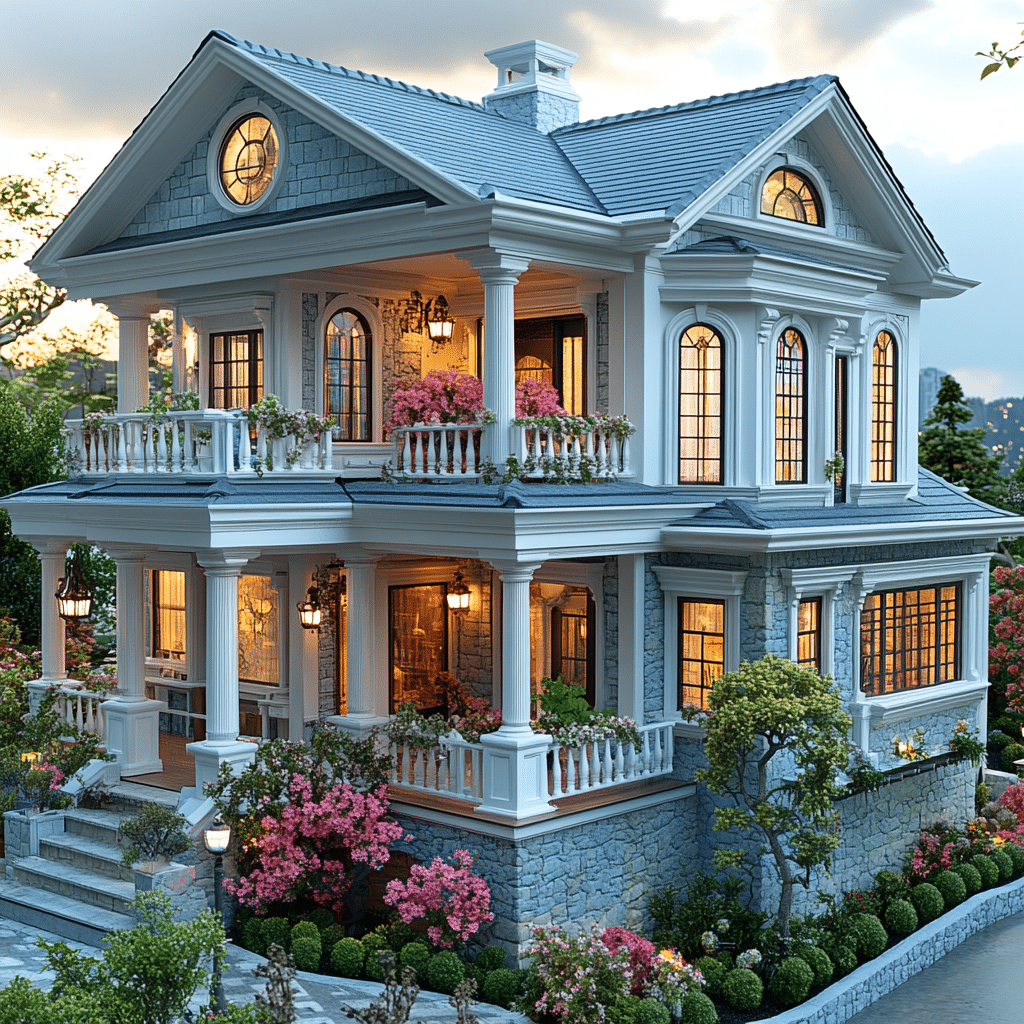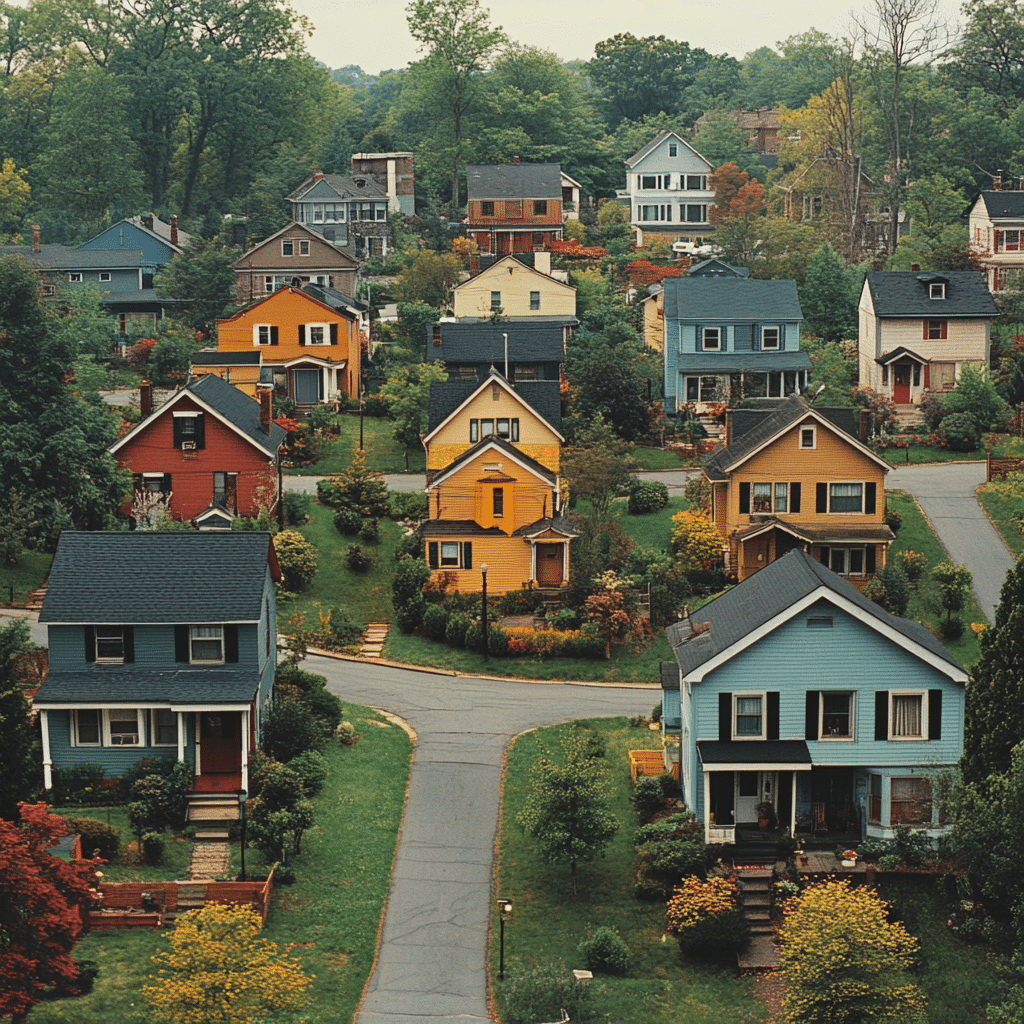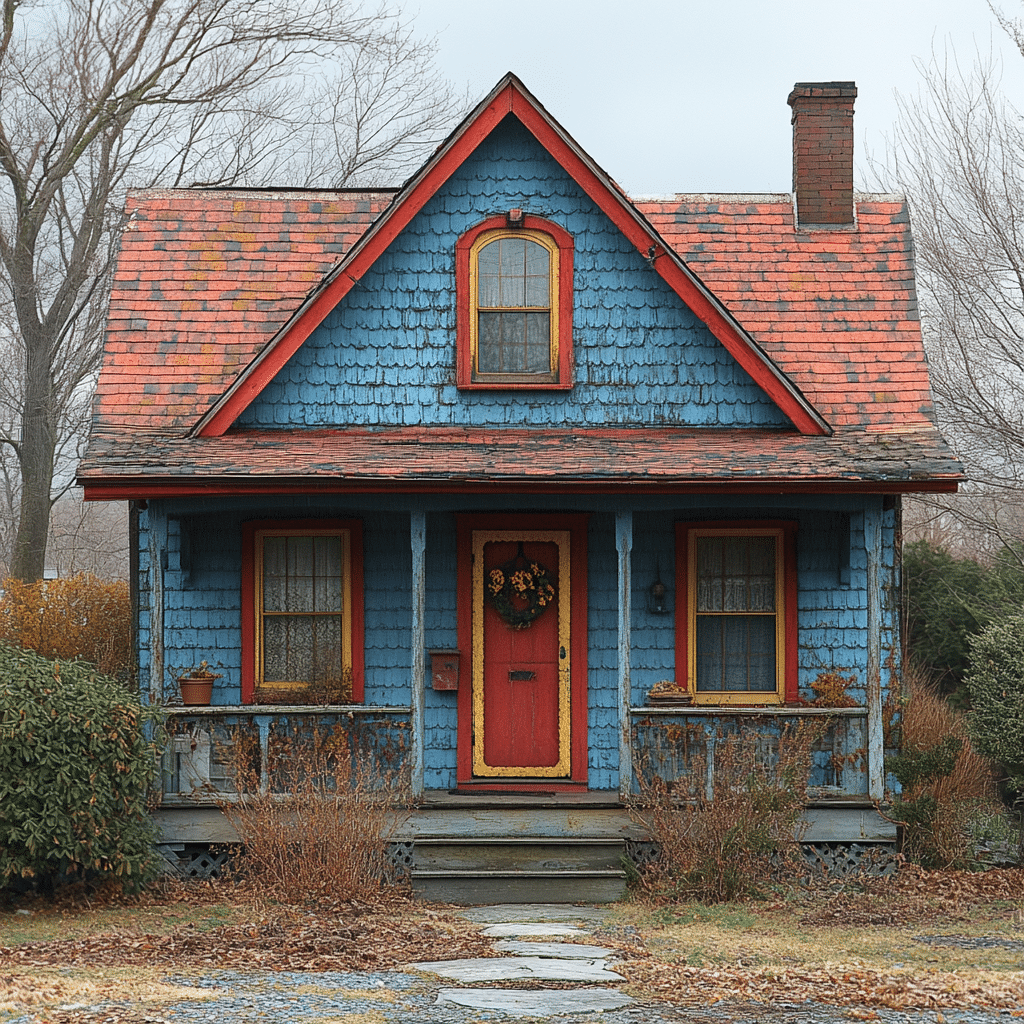When we talk about the average American house size, we’re looking at something more than just numbers and square footage. We’re observing cultural shifts, economic movements, and technological advancements that mirror broader social trends. The average American house size isn’t static; it has been dynamically changing, reflecting who we are and what we value over the decades. Let’s dive into these remarkable trends and see where they lead us.

The Evolution of Average American House Size
Historical Perspective: From Cozy to Expansive Homes
Back in the 1950s, the average American house size was a modest 983 square feet. Can you imagine? It was a time when families valued cozy living in smaller, tighter quarters. As time marched on, however, things changed. By 2024, the average home square foot had expanded nearly threefold to around 2,500 square feet. This explosion in size aligns with post-war economic prosperity, shifts in family dynamics, and the pursuit of the American dream: bigger homes representing success and stability.
Modern Trends: Smaller Yet Smarter Spaces
Recently, the trend towards larger homes has made somewhat of a U-turn. Smaller, smarter homes are becoming the norm, particularly in urban cores like New York and San Francisco. These cities reflect the move towards efficiency, sustainability, and minimalistic living. Today, many new homes are approximately 1,800 square feet, preferring innovation and utility over sheer size.

Influences on Average Home Square Footage
Economic Impact and Average Price Per Square Foot
Economic factors play a significant role in dictating home sizes. From inflation to land prices, many elements influence how much we’re willing—or can afford—to spend per square foot. Reports from Zillow indicate that the average price per square foot hit $222 in 2023. Despite this being the national average, cities like San Francisco and New York command prices upwards of $600 per square foot. It’s no wonder that folks in these bustling metropolises lean towards smaller homes.
Technological Advancements and Design Innovations
Innovations in smart home technology and sustainable materials have revolutionized living spaces, making them more functional and environmentally friendly. Giants like Tesla and Google have spearheaded advancements that pack more utility into smaller footprints. Hence, modern homes don’t necessarily need sprawling space but rather ingenuity and clever design.
| Year | Average Size (sq ft) | Key Features | Price ($, adjusted for inflation) | Trends / Insights |
| 1970 | 1,500 | 3 bedrooms, 1 bathroom, 1-car garage | ~$138,000 | Smaller families, post-war suburban expansion |
| 1980 | 1,740 | 3 bedrooms, 2 bathrooms, 2-car garage | ~ $193,000 | Larger homes as dual-income households rise |
| 1990 | 2,080 | 4 bedrooms, 2.5 bathrooms, 2-car garage | ~$234,000 | Increased demand for space and privacy |
| 2000 | 2,260 | 4 bedrooms, 2.5 bathrooms, 2-car garage | ~$279,000 | Boom in new constructions, larger living spaces |
| 2010 | 2,370 | 4 bedrooms, 3 bathrooms, 2-car garage | ~$305,000 | Great Recession impact gradual recovery |
| 2020 | 2,480 | 4-5 bedrooms, 3.5 bathrooms, 3-car garage | ~$340,000 | Preference for larger homes, remote work increase |
Regional Variations in Average American House Size
Suburban Spread: Midwest and Southern Comfort
In suburban areas, especially in states like Texas and Ohio, the average home square foot is generally larger, averaging around 2,700 square feet. This is driven by the availability of affordable land and a cultural preference for larger suburban homes. The spread-out nature of these regions allows for bigger homes with sprawling yards.
Coastal Constraints: Urban Compact Living
Contrast this with coastal states like California and New York, where limited land availability and high property costs encourage smaller homes. Here, the average house size hovers around 1,500 square feet. These homes are often vertically oriented to maximize available space, fitting right into the urban landscape.
Socioeconomic Factors Affecting House Sizes
Family Structures and Housing Demands
The transformation in family structures—from nuclear families to multigenerational households—has increased demand for homes with versatile layouts. We’re seeing more designs that include “mother-in-law” suites and separate living areas to accommodate extended relatives. The changing nature of family life significantly influences how homes are designed and used.
Climate Change and Environmental Considerations
Climate change awareness has pushed more people towards energy-efficient homes. The modern homeowner is not just thinking about square footage but also about energy consumption and environmental impact. This has led to a preference for homes built with sustainable materials and features like solar panels, even if it means compromising on size.
Real-Life Examples of the Evolving American House
Pulte Homes and Smart Efficiency
Pulte Homes is a shining example of the trend towards more efficient and smarter homes. Their recent projects incorporate energy-efficient appliances, solar panels, and innovative layouts that make the most of every square foot. They’re proving that you don’t need a huge house to live comfortably and sustainably.
The Tiny House Movement: Jay Shafer and Tumbleweed Houses
When talking about compact living, Jay Shafer‘s Tumbleweed Tiny House Company cannot be ignored. Shafer is a pioneer in the tiny house movement, creating homes often under 400 square feet. These homes focus on minimalism and sustainability, challenging our traditional ideas of space and comfort.
The Future of Average American House Size
Predictions and Innovations
Looking forward, we can expect the average American house size to stabilize around 2,000 square feet. This projection is based on continued urbanization, technological advancements, and growing environmental concerns. Future homes will likely be smarter and more adaptable, using every square foot efficiently.
The Role of Policy and Community Planning
Municipal policies and zoning laws will be pivotal in shaping future home sizes. Incentives for sustainable building practices and mixed-use developments can promote practical living spaces that meet diverse needs while managing growth and minimizing environmental impact.
Embracing Change: A New Vision of Home
The story of the average American house size is a reflection of our societal journeys and aspirations. As we step into the future, our homes must continue to evolve—balancing comfort, efficiency, and sustainability. This ongoing evolution mirrors our values and challenges us to rethink what we mean by “home”.
For more in-depth information and to explore the diverse loan options that can bring your dream home within reach, visit our loan solution center at Mortgage Rater. Whether you’re searching for a way to finance that perfect suburban house or a compact urban condo, we’re here to help.
Remarkable Trends in Average American House Size
Ever wondered about the fascinating trends surrounding the average American house size? Well, you’re in for a treat! Let’s dive into some intriguing trivia and fun facts that might just surprise you.
A Journey Through House Sizes
Did you know that over the past few decades, the average American home has seen some dramatic changes? Back in the early 1970s, a typical house was around 1,660 square feet. Fast forward to the present, and this number has ballooned! Today, the average square footage of a house in the U.S. is around 2,687 square feet. This rise in size mirrors the dynamic tastes and expanding needs of American families, influenced by factors such as increased living standards and diverse lifestyle choices.
Extravagance Personified
Speaking of size, do you know which is the largest home in the U.S.? The title goes to the Biltmore Estate in Asheville, North Carolina, sprawling over a mind-boggling 175,000 square feet! In contrast, might explain why the average home size seems quite humble. Such opulence may not be practical or affordable for most, but it does reflect a unique aspect of American architectural ambition and history.
Community Influences
Local culture and regional trends also play crucial roles. For example, house sizes can greatly vary depending on where you’re located. Areas like Wellington To West palm Beach exhibit larger home sizes compared to urban centers where space is at a premium. This variation tells a story of local needs and lifestyles impacting housing trends across different regions. Location is everything!
Fun and Games
To add a bit more spice, here’s a quirky tidbit. Did you know that Luke Glendening, a professional hockey player, likely owns a home size that’s in line with the average? Though sports stars often live in luxurious pads, many choose homes that provide comfort without going overboard, reflecting a more balanced approach to living. It’s not all about the trophy houses – sometimes it’s all about sensible choices.
So there you have it – a mix of trivia and intriguing facts that shine a light on the concept of average American house size. Whether you’re house-hunting or just curious, understanding these trends can provide an interesting glimpse into how Americans live and what influences their housing decisions.




